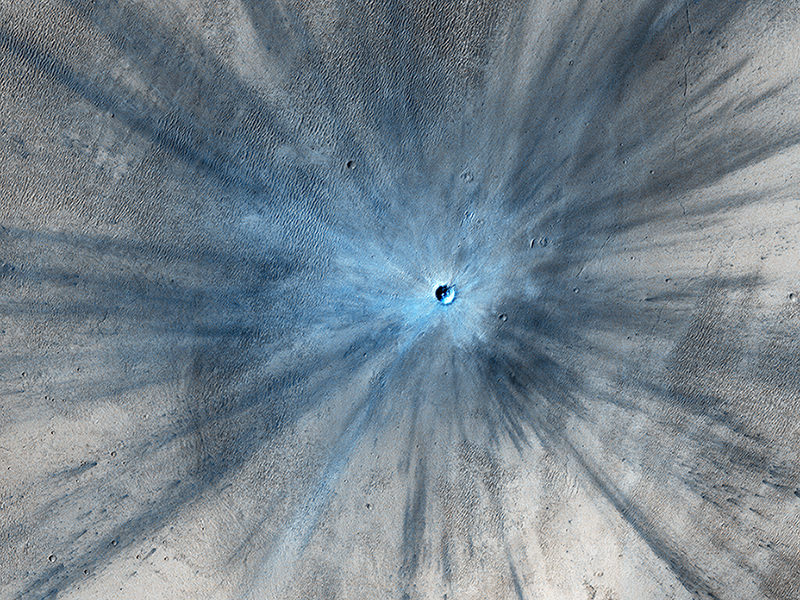

A fresh impact crater is seen in this image taken by the High Resolution Imaging Science Experiment (HiRISE) camera on NASA's Mars Reconnaissance Orbiter on Nov. 19, 2013. Credit: NASA/JPL/University of Arizona
The great thing about the longevity of the Mars Reconnaissance Orbiter is that we can see changes taking place on the Red Planet, such as this relatively new and rather large impact crater. This image shows a stunning 30-meter-wide crater with a rayed blast zone and far-flung secondary material surrounding. Scientists say the impact and resulting explosion threw debris as far as 15 kilometers in distance.
Before and after pictures of this region show the new impact crater formed between July 2010 and May 2012.
The image has been enhanced in false color and so the fresh crater appears blue because of the lack of reddish dust that covers most of Mars’ surface.
With MRO’s help, scientists have been able to estimate that Mars gets pummeled with about 200 impacts per year, but most are much smaller than this new one.
The usual procedure for finding new craters is that MRO’s Context Camera, or CTX, or cameras on other orbiters identify anomalies or dark spots that appear in new images and then MRO’s High Resolution Imaging Science Experiment (HiRISE) camera is targeted to follow up by imaging those dark spots in greater detail.
More info on this new image can be found here.
In 2007, astronomers discovered the Cosmic Horseshoe, a gravitationally lensed system of galaxies about five-and-a-half…
Venus differs from Earth in many ways including a lack of internal dynamo driving global…
The journey to Mars will subject astronauts to extended periods of exposure to radiation during…
Anthropogenic climate change is creating a vicious circle where rising temperatures are causing glaciers to…
Satellites often face a disappointing end: despite having fully working systems, they are often de-orbited…
Astronomers have known for some time that nearby supernovae have had a profound effect on…